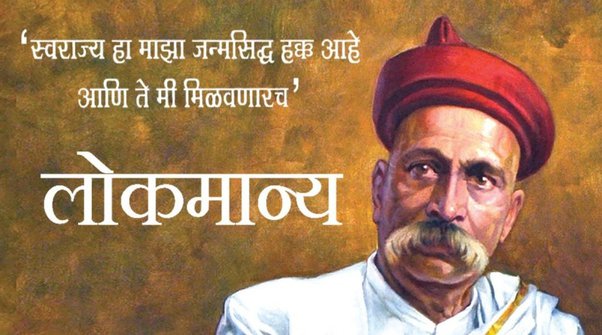Today is the 166th birth anniversary of an important nationalist leader Bal Gangadhar Tilak. Born in Ratnagiri, Maharashtra on 23 July 1856, Tilak, whose real name was Keshav Gangadhar Tilak; was a freedom fighter, social thinker, philosopher, and educator.
He was the most opposed to British rule and used extremist mass appeal tactics which laid the foundations of our freedom struggle. However, many myths about him need to be debunked:
1. Tilak was a right-wing Hindu nationalist:
Tilak’s politics drew heavily from his scholarly readings on Hindu scriptures. He wrote the ‘Bhagvad Gita Rahasya’, wherein he showed the path to desireless action to achieve a lofty goal.
He used Ganapati and Shivaji festivals to mobilise the masses against the British rule for nationalist purposes, rather than dividing the society.

Credits: Ommcom News
Like Swami Vivekananda, whom he greatly admired, Tilak’s was an inclusive Hinduism. Indeed, Tilak’s closest aide in Bombay was a Christian, Joseph ‘Kaka’ Baptista, who is also credited with coining the “Swaraj is my birthright” slogan.

Credits: Sahisamay.com
2. Tilak was a brahminical hegemon
It is true that some of his early writings on caste were highly conservative and hence, problematic. However, both as an intellectual and as a political leader, he evolved with the times.
He maintained that varna-ashrama is an integral part of the Hindu society, but later warned the so-called upper caste people in Hindu society against continued neglect of the “untouchable castes”, and asked, “How long can the proponents of Hindu religion turn a blind eye to this?”
3. Tilak was the ‘father of Indian unrest’
Many British historians had blamed Tilak for misleading the youth and creating chaos in society for his personal gains. Tilak’s ‘trisutra’ was swadeshi, swaraj, and nationalist education. He used these principles for developing younger generations who would later lead the freedom movement, and not for making his own ‘cult’.

Lala Lajpat Rai(left), Tilak (Centre), and Bipin Chandra Pal(right)
Credits: The Quint
4. Tilak was a conservative, vehemently opposed to social reforms
Leftist historians criticized him for opposing any effort to give women access to education and labeled him a fierce opponent of women’s emancipation.
However, Tilak was not against social change but gave primacy to political independence. He was open to social reforms, but from an Indian perspective rather than taking the help of the British. He was opposed to British bureaucracy meddling in the affairs of the Indian society.

Credits: Wikimedia Commons
5. Tilak was a Brahmin centred-Hindutva elitist
“Swaraj” for Tilak was a Democratic Raj. He did not deny education and opportunities to lower classes, as is argued by many. He regularly addressed meetings of trade unions in Bombay and elsewhere. This debunks the claims by communist historians that Tilak was an elitist leader.

Credits: Aptinfo
Though he may have reservations about the caste system, Tilak never came up with ideas belonging to the Hindutva ideology in line with leaders like Savarkar. He preached for all ‘Indians’ freedom irrespective of caste, creed, religion, and gender. Far from being an elitist, he was the people’s leader.
References: The Quint, The Hindu, Scroll
Featured Image Source: Quora



















































































